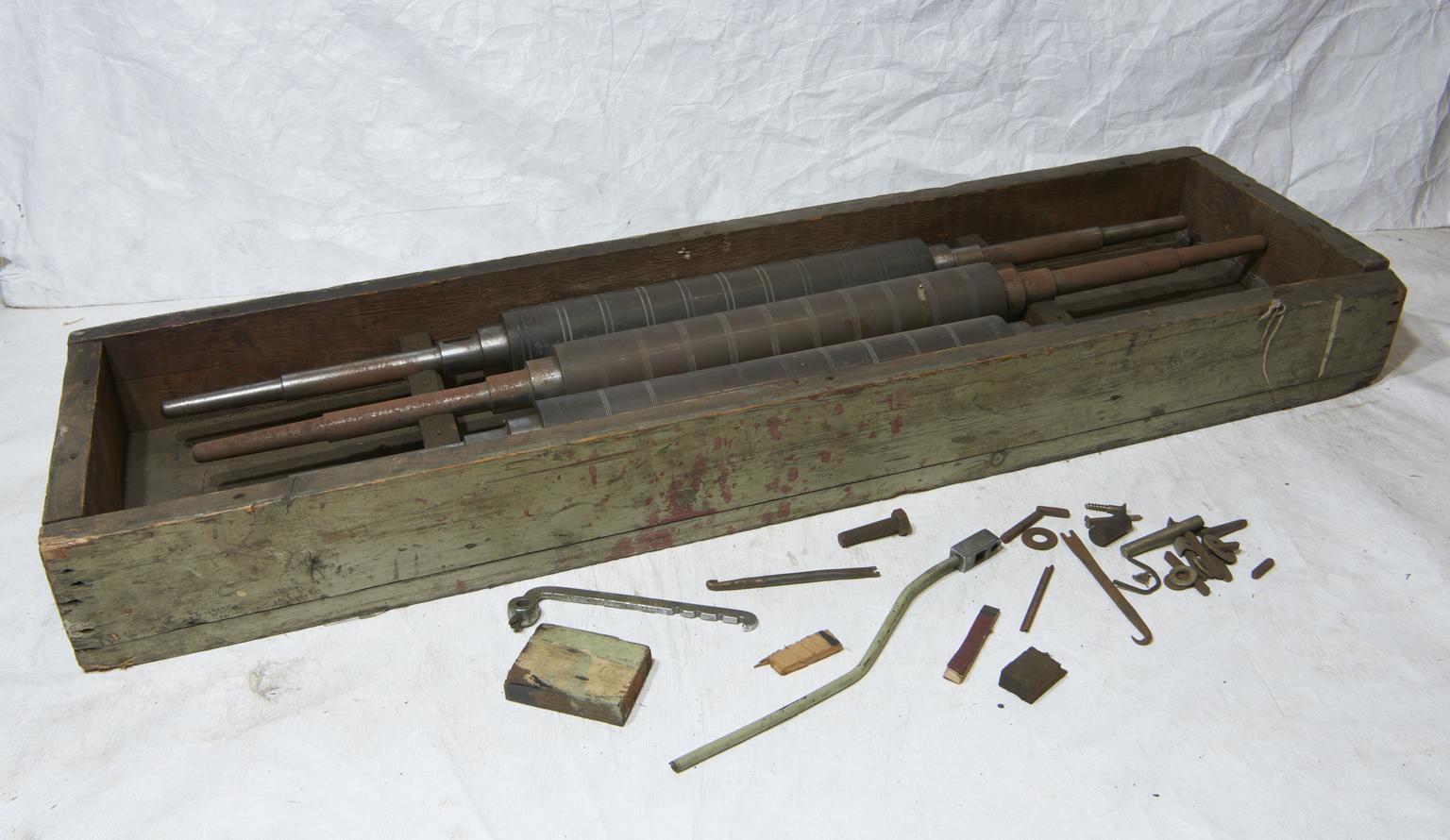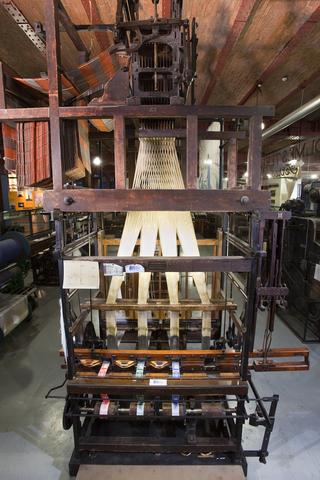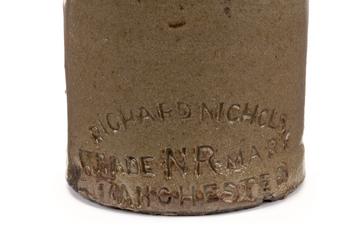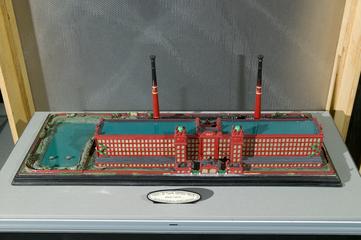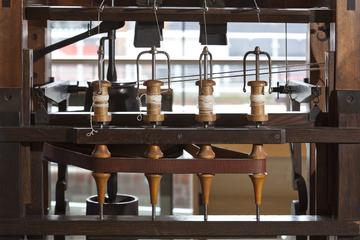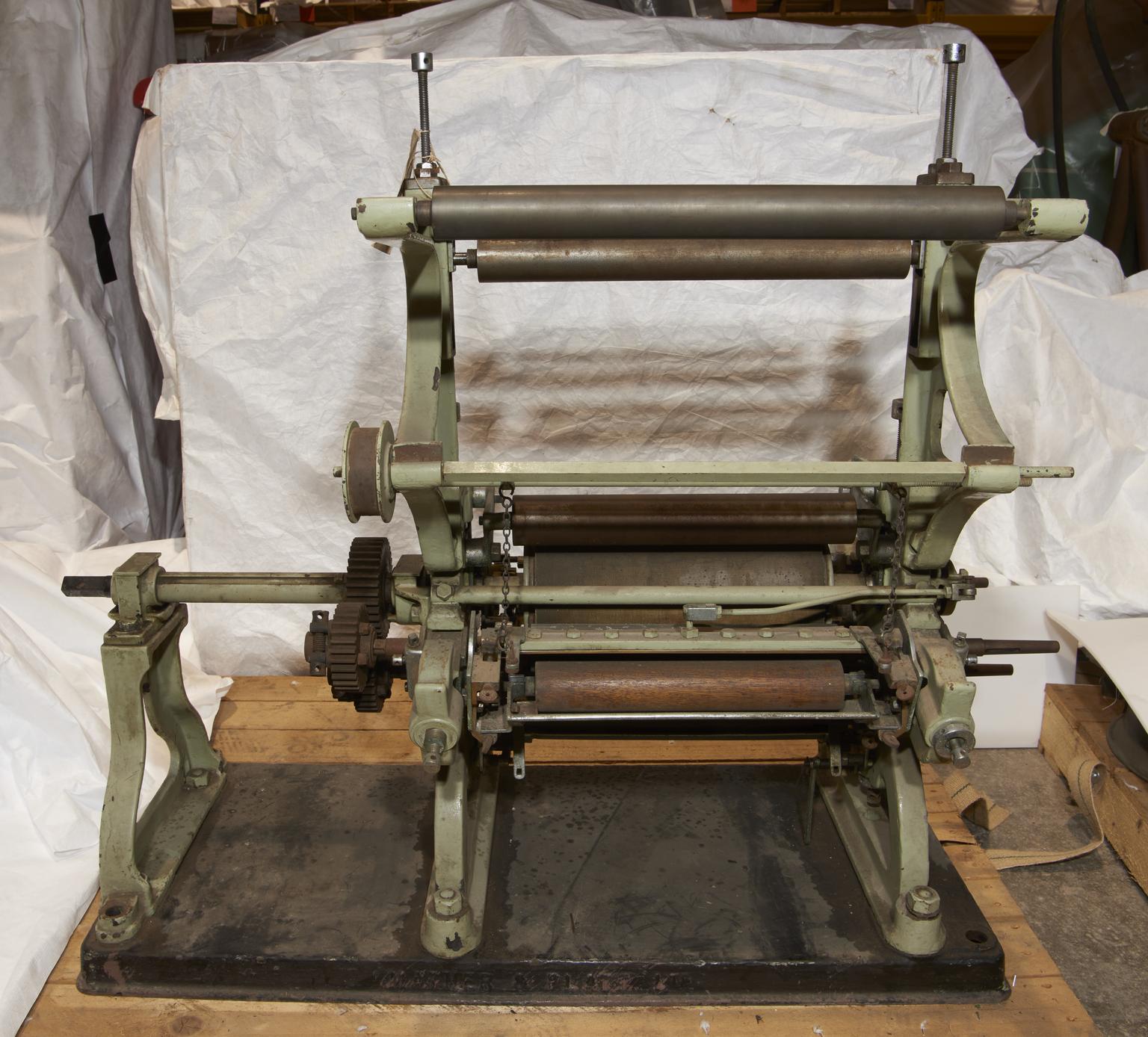
Roller Textile Printing Machine
Small-scale, three roller textile printing machine made by Mather & Platt Ltd in Manchester, about 1900-1950 and used by students in the Polymer and Fibre Science Department at the University of Manchester Institute of Science and Technology. Includes two sets of three copper engraved rollers, ink trays and wooden inking rollers.
More
This small-scale roller printing machine may have been produced by Mather & Platt especially for use by textiles students at the University of Manchester where it was used, as it is much smaller than a typical, commercial printing machine and has been designed to be operated by hand. Mather & Platt was one of Manchester's most important engineering firms. It supplied textiles manufacturers in Lancashire and across the world with printing and finishing machinery, amongst a great variety of other products.
Roller printing is a method of adding patterns to cloth using engraved copper rollers. The rollers, engraved with the intended pattern, are loaded with dye paste then passed over the fabric to be printed, transferring the dye and producing the pattern. This method of printing was first developed by Joseph Bell in Preston in 1785. The invention transformed the printing industry, making it easier and cheaper to produce patterned cloth. Modern roller printing machines are still based on the principles devised by Joseph Bell, 250 years ago.
- Measurements:
-
overall: 940 mm x 1100 mm x 610 mm,
- Materials:
- iron , copper (alloy) and wood (unidentified)
- Object Number:
- Y1969.16/1
- Image ©
- The Board of Trustees of the Science Museum
